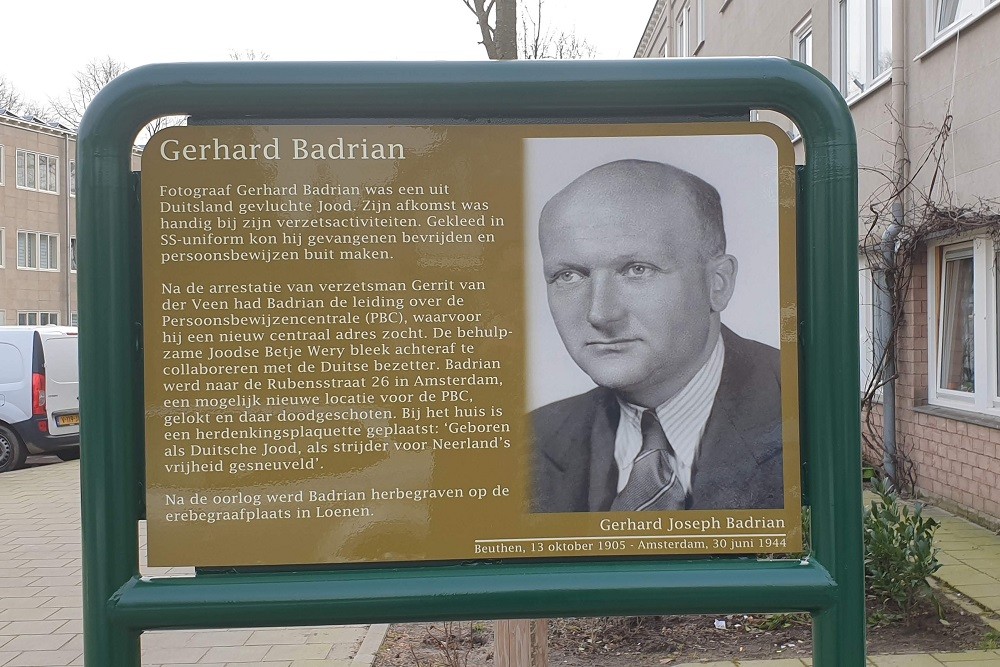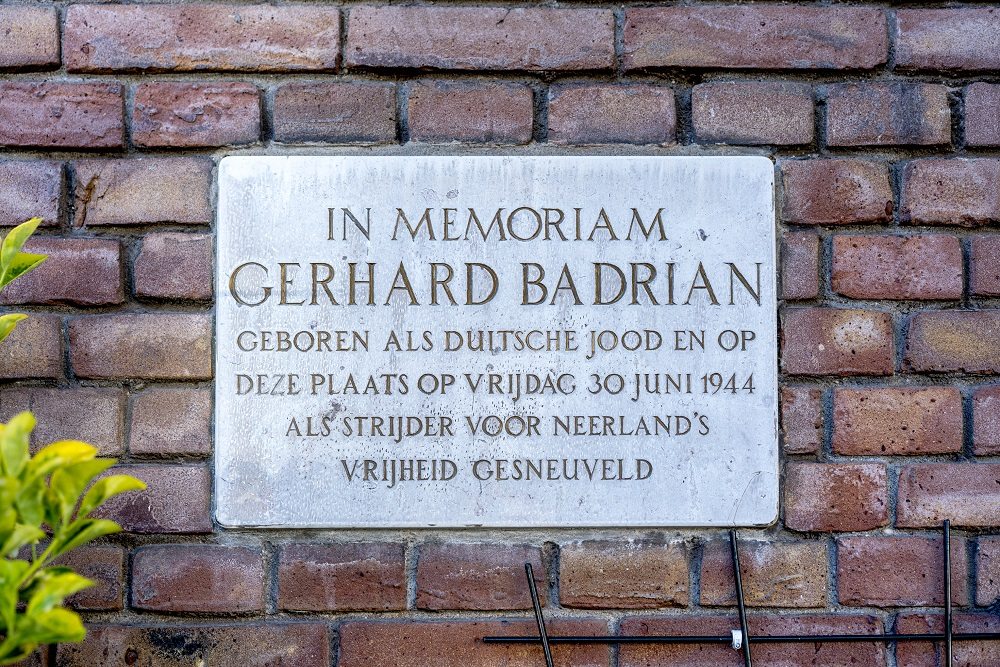Badrian, Gerhard Joseph
- Date of birth:
- October 13th, 1905 (Beuthen/Opper Silezië (Duitsland))
- Date of death:
- June 30th, 1944 (Amsterdam)
- Nationality:
- German
Biography
Lived in Amsterdam, Vijzelstraat 72. Son of Haymann Badrian (October 3, 1875 Ornontowitz - March 13, 1943 Sobibor (Poland) and Frieda Herrnstadt (June 28, 1876 Hirschberg, Germany - March 13, 1943 Sobibor). Unmarried. He was engaged to Maria Griesheimer from Essen, who abandoned him and married an SS man. Merchant/advertising photographer. Badrian fled to Amsterdam as a Jew after the events of Kristallnacht on November 9, 1938. Shortly after the end of the First World War in 1918, he stayed there for some time as a foster child with the Jewish De Vries family. Later he also brought his parents over from Germany. They settled in Bussum. Shortly afterwards, his divorced sister Erna Badrian (June 17, 1903 Beuthen - June 11, 1943 Sobibor) also came with her son to the Netherlands. As a result of the German measures in 1942, Badrian found himself without work. After the first raids on Jews, he went into hiding with the Hartland family in Apeldoorn and then with the Van Lohuizen family in Epe. Badrian could not find his place there and returned to Amsterdam. Under the pseudonyms Bernhard Albert, Max Albert and Kleine Hans, Badrian rolled into the resistance group of the sculptor and legendary Amsterdam resistance fighter Gerrit Jan van der Veen (November 26, 1902 Amsterdam - June 10, 1944 Overveen). Badrian made forgeries and participated in robberies on the Amsterdam prison at the Weteringschans. Dressed as an SD officer, he also managed to free prisoners from fully loaded raid vans several times using forged papers and in genuine German. Badrian became really fanatical when his parents and his sister Erna (June 17, 1903 Beuthen - June 11, 1943 Sobibor) were arrested before his eyes and taken to Westerbork. All three were gassed in the German Sobibor extermination camp in Poland. His nephew survived the war and emigrated to America. Due to the actions of the 23-year-old Jewish traitor Betsy Wery, Badrian came into the sights of his persecutors. The woman invited Badrian to her own address for an appointment to set up an office there. When Badrian appeared in the house together with his girlfriend Anne Maria Dey and resistance comrade Frits Reinder Boverhuis (26 March 1915 Amsterdam - 16 July 1944 Overveen), SD members rushed from all sides. A firefight ensued, during which Badrian shot SS man Joseph Heinen (13 September 1906 Monschau - 2 July 1944 Amsterdam). He himself also died. Boverhuis and Dey were captured and Wery pro forma. Boverhuis was later killed with a shot in the back of the head by 21-year-old SS man and ex-Eastern Front fighter Johan Willem Snoek (1 August 1922 Amsterdam), who committed suicide on 8 June 1945. Dey disappeared in the Ravensbrück women's concentration camp. She survived the war. Eight days after his death, Badrian was cremated in Driehuis-Westerveld. The NSB chief of police P. J. A. Spannenburg kept the urn with Badrian's ashes at the police station with the inscription: "This is what happens to terrorists". Years later, the urn ended up with Mrs. Dey, who transferred it to the War Graves Foundation in 1969 for burial in Loenen. A street in Amsterdam is named after him. A memorial plaque has been placed in Rubenstraat where he was shot.
Do you have more information about this person? Inform us!
Sources
- Archief Jack Kooistra. Duitsers en Oostenrijkers in Nederlands Verzet/De andere kant van de Tweede Wereldoorlog. Oorlogsgravenstichting.




